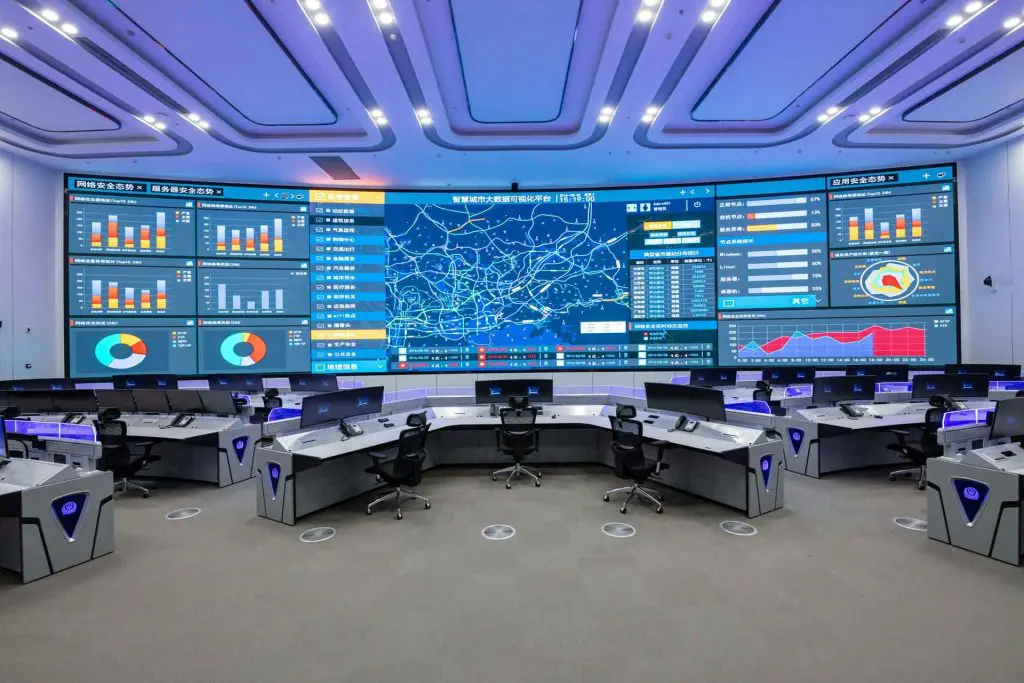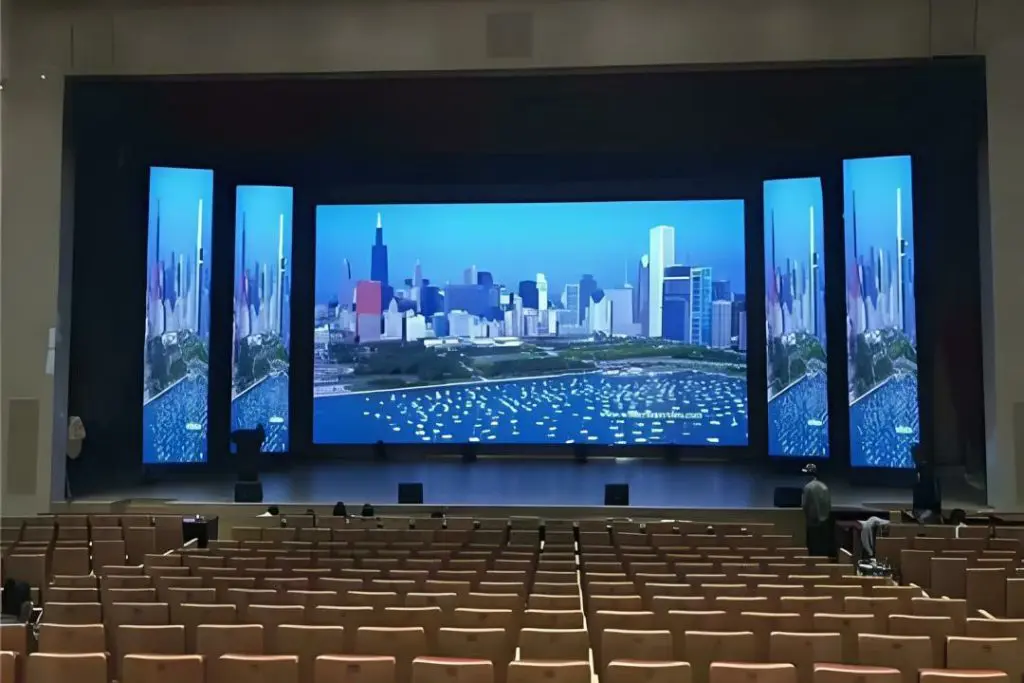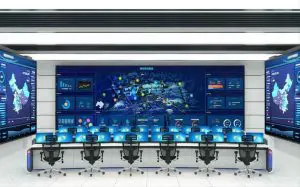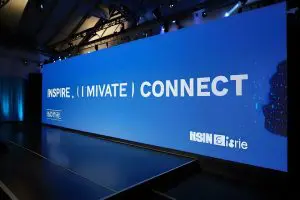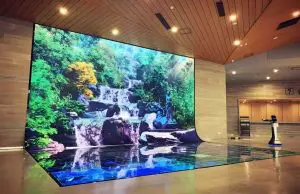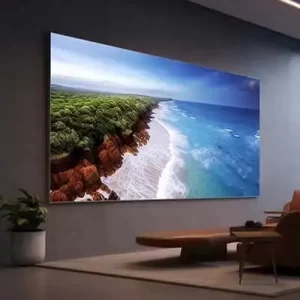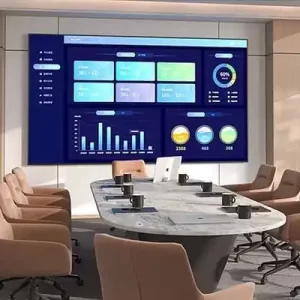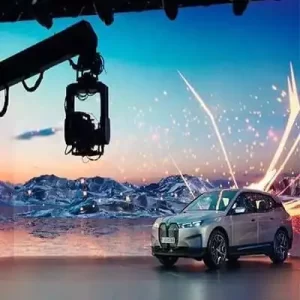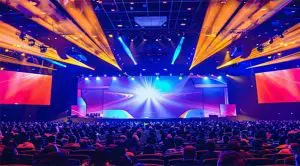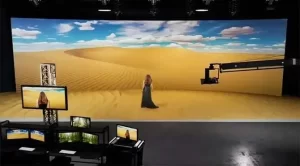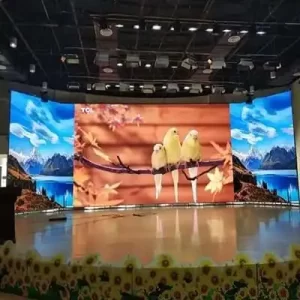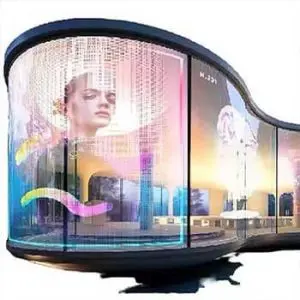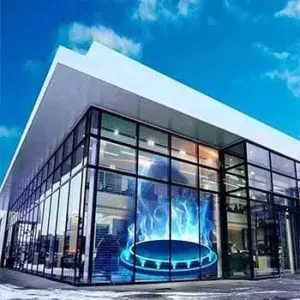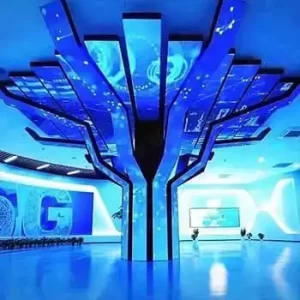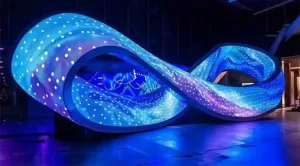A Indoor LED display is a type of digital screen that uses light-emitting diodes (LEDs) to showcase vivid, high-resolution visuals such as images, text, and videos in indoor environments. These displays are designed to deliver exceptional brightness, color accuracy, and clarity, making them ideal for applications like retail advertising, corporate presentations, entertainment, and information displays.
Unlike outdoor LED screens, indoor LED displays are optimized for controlled lighting conditions, offering features like smaller pixel pitches, lightweight structures, and seamless visuals for audiences that are closer to the screen.
Key Features of Indoor LED Displays
1. High Resolution
- Indoor LED screens typically have smaller pixel pitches (e.g., P0.6–P4), allowing for sharper and more detailed images. This is especially important for close viewing distances, where clarity is essential.
2. Brightness
- Brightness levels for indoor LED displays range between 800 and 1,500 nits, which is ideal for environments with controlled lighting, such as shopping malls, conference rooms, or theaters.
3. Lightweight and Thin Design
- Indoor LED panels are designed to be sleek and lightweight, making them easy to install on walls, ceilings, or freestanding structures without requiring heavy-duty mounts.
4. Seamless Display
- The modular design of indoor LED displays allows for gapless connections, creating a smooth and continuous viewing experience for audiences.
5. Energy Efficiency
- LEDs are highly energy-efficient, consuming less power while delivering high brightness and vivid visuals, which reduces long-term operational costs.
6. Customization
- Indoor LED displays are modular, enabling customization for different screen sizes, aspect ratios, and installation configurations (e.g., curved or flat surfaces).
Applications of Indoor LED Displays
Indoor LED displays are used across various industries and for multiple purposes. Below are some of the most common applications:
1. Advertising and Retail
- In-Store Promotions: Showcase special offers, new products, or brand videos to attract customers.
- Window Displays: Create dynamic visuals to grab the attention of passersby.
2. Corporate and Business
- Conference Rooms: Use indoor LED screens for presentations, data sharing, and video conferences.
- Reception Areas: Display branded content or welcome messages in corporate lobbies.
3. Events and Entertainment
- Stage Backdrops: Create immersive visual effects for live performances, conferences, or awards ceremonies.
- Exhibitions: Use interactive LED displays to engage attendees with product demonstrations or branded content.
4. Public Information
- Airports and Train Stations: Display schedules, announcements, and wayfinding information.
- Museums and Galleries: Use LED screens to present interactive exhibits or detailed visuals.
5. Education and Training
- Classrooms and Auditoriums: Enhance learning experiences with vibrant, clear displays for lectures and training sessions.
- Virtual Meetings: Use LED displays for large-scale video calls or hybrid learning setups.
Advantages of Indoor LED Displays
1. Superior Visual Quality
- With high resolution, vibrant colors, and exceptional contrast, indoor LED displays ensure content is visually engaging, even at close distances.
2. Versatility
- Indoor LED screens are adaptable for different settings, from small retail spaces to large conference halls.
3. Long Lifespan
- LED displays typically last 50,000 to 100,000 hours, making them a cost-effective long-term investment.
4. Low Maintenance
- Modern LED technology is highly durable and requires minimal maintenance compared to older display systems.
5. Seamless Integration
- Indoor LED displays can be seamlessly integrated into walls, ceilings, or custom-designed structures, enhancing the aesthetic appeal of any venue.
Technical Specifications of Indoor LED Displays
| Specification | Description |
|---|---|
| Pixel Pitch | Ranges from P0.6 to P4, allowing for high-resolution, close-range viewing. |
| Brightness | 800–1,500 nits, suitable for indoor environments with controlled lighting. |
| Viewing Distance | Optimized for close viewing, typically 1–4 meters, depending on pixel pitch. |
| Refresh Rate | ≥3,840 Hz for smooth, flicker-free visuals, especially for video content. |
| Viewing Angle | Wide angles (140°–160°) ensure excellent visibility from multiple perspectives. |
| Modular Design | Panels can be combined to create custom screen sizes and configurations. |
| Power Efficiency | Energy-efficient operation reduces power consumption and operational costs. |
How to Choose the Right Indoor LED Display
1. Identify Your Needs
- Determine the primary purpose of the display (e.g., advertising, presentations, or entertainment).
2. Select the Right Pixel Pitch
- Smaller pixel pitches (e.g., P0.6–P2.5) are ideal for close viewing, while larger pixel pitches (e.g., P2–P4) work well for medium-distance viewing.
3. Evaluate Brightness
- Ensure the brightness level (800–1,500 nits) is adequate for the lighting conditions of the indoor space.
4. Consider the Viewing Distance
- Check how far the audience will be from the screen and choose a pixel pitch accordingly. For closer distances, opt for higher resolution.
5. Assess Installation Space
- Confirm the available space and choose a screen size and design (flat, curved, or freestanding) that fits the venue.
6. Look for a Reliable Manufacturer
- Choose manufacturers that provide high-quality components, customization options, and after-sales support.
Cost of Indoor LED Displays
The cost of an indoor LED display depends on factors like resolution, size, and customization. Below is a general guide:
| Pixel Pitch | Resolution | Cost per m² (USD) |
|---|---|---|
| P0.6–P2.5 | Ultra-high resolution | $500–$3,500 |
| P2–P4 | Standard high resolution | $600–$1,500 |
Additional Costs
- Installation: $5,000–$20,000 depending on size and complexity.
- Control System: $2,000–$10,000 for software and video processors.
- Maintenance: Annual maintenance costs are typically 5%–10% of the screen’s value.
Trends in Indoor LED Displays
1. Fine-Pitch LED Displays
- Increasing demand for ultra-high-resolution displays (P1.2–P2.0) in corporate and retail environments.
2. Interactive Displays
- Touch-enabled LED screens are being incorporated into museums, retail stores, and training centers for enhanced engagement.
3. Energy-Efficient Technology
- Manufacturers are focusing on low-power LEDs to reduce operational costs while maintaining brightness and performance.
4. Curved and Flexible Designs
- Curved indoor LED displays are becoming popular for immersive experiences in events and creative installations.









